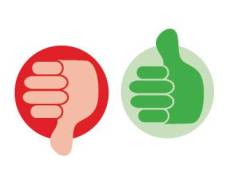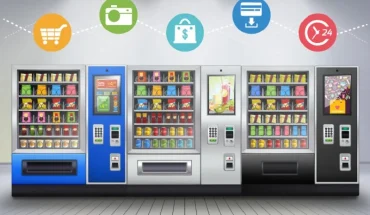By Lee Rickwood
In a world of instant, digital connectivity, the top tech companies must do a better job of communicating with their customers.
It’s not just about telling users how something works.
It’s about telling them if, how and why information is gathered about how, when and where they use it.
User manuals and privacy policies must be more useful, understandable, accessible.
“It is perhaps easy to get lost in the issue of opt-in versus opt-out, but one issue that needs serious consideration is that of meaningfulness,” Canadian Privacy Commissioner Jennifer Stoddart told a group of practicing privacy professionals last week.
“Transparency and meaningfulness of consent are serious issues,” she said at a symposium of the International Association of Privacy Professionals (IAPP) held in at Ryerson University in Toronto.
One of Stoddart’s provincial counterparts, Ontario Information and Privacy Commissioner Dr. Ann Cavoukian, said it a little more pointedly:
“User manuals suck!”
“It’s all about trust,” Cavoukian explained. “You have to engender consumer confidence. Be transparent; give your customers notice and be sensitive to the phrasing and the context.”
Cavoukian rejected the notion that a printed user’s manual, such as the Apple iPhone 3G manual, with its rather revealing statements about geo-location data collection, was in fact sensitive or contextually relevant enough to truly address privacy concerns.
“Of course, we should all read the manual,” she readily agreed. “But in this busy world, we all have so much to do; we feel we don’t have the time…”
The iPhone manual is ‘just’ 26 pages; iTunes is like 56! Cite your own example, you know what Cavoukian means.
“So let’s think about the design of the manual. It is the first interface for the user. It has to be on the screen. Not being there is a real disconnect in this instantaneous world. All those apps out there, and I have to be pointed to a manual?!? That’s unacceptable! Give me a screen shot,” she said emphatically. “Give me a thumbs up, thumbs down on whether I like it or not.”
“That’s innovation!”
And, it’s ‘Privacy By ReDesign’, one of the Commissioner’s newest initiatives, first unveiled at the Toronto gathering.
“The death of privacy has been widely portrayed of late. And we need to reframe how we present the privacy equation,” she explained of the new program. “This is precisely why it’s time for Privacy by ReDesign! It will help organizations rethink and redesign privacy into their existing, legacy systems and business practices.”
For years now, Cavoukian has advocated for organizations to proactively embed privacy into technology right from the outset, a concept she calls Privacy by Design.
International privacy regulators unanimously passed a landmark Resolution in 2010 recognizing the made-in-Ontario solution as a Global Privacy Standard, and the U.S. Federal Trade Commission now recommends Privacy by Design for protecting online privacy.
New technology, or old – embedding privacy from the get-go or retrofitting it, Cavoukian sees privacy as a creative and business opportunity for manufacturers and service providers, not a dreary drag on corporate bottom line.
And she sees it for companies like Apple. Or Sony. Or Google. Or…..
Concerns about personal privacy have extended to mobile devices, gaming consoles, search engines and beyond – just see all those iPhone tracking, Sony hacking, and Google mapping stories.
Folks are starting to realize the digital trade-off may not be as fair or as beneficial as they once thought.
Trade-off?

Personal data can be a revenue generator for online service providers - some say for online users, too.
Well, we share information, they provide services.
We are the enthusiastic consumers of everything techno, mobile and online. They are the social networks, music download companies, mobile device manufacturers and Internet service providers.
We’re giving them our names, birthdates, likes and dislikes. We’re giving them a personal economic rundown through our credit card-enabled purchase histories. We’re telling them where we are – and where we are not – through our cell and smart phones.
We’re sharing stuff about ourselves and our friends and families on social networking sites and giving it away for free.
But ‘we’ are much more valuable than that. You can tell that in the way ‘they’ seek to develop a comprehensive portrait of each of us, and the way they are repackaging our data in interesting, engaging, informative and profit-making ways.
Those ideas were put forward by Joshua Kauffmann, at any rate. A keynote speaker at the IAPP event, he’s with the Graduate School of Design at Harvard University, where among other things he helps private tech start-ups work in the public domain.
We are trying to be human, to share and connect with others. They are trying to be corporate, to generate profits. We take advantage of the gadgets they offer, they take advantage of the information we willingly share. Yes, the techno-connected world brings us lot of enjoyment and benefit, but it seems we’re paying double for it.
The first time, there’s the sticker price – the actual cost of purchase, the contract fees, the monthly subscriptions, whatever.
Then, there’s the cost of losing control of our private data. That may be a tangible cost – the loss of a credit card number or personal health record – or it may be an opportunity cost, the missed chance at receiving real market value in exchange for our real valuable data.
Search engines keep our inquiries and the results for like 18 months. Mobile devices track our whereabouts and store the details for a year or more. Online data repositories have our purchase histories, our health records, our stated interests, our personal desires.
“We are living our private lives online, where there is little or no control,” Stoddart said in announcing a series of reports, activities and initiatives to investigate the issue further. “It’s being shared with the private sector or general public and for reasons related to economic activity….”
Privacy professionals like Stoddart and Cavoukian say those reason should be carefully explained in understandable, useful and techno-savvy ways.
Hey, with a ‘simple thumbs up, thumbs down’ maybe we can all share in the royalties from all that data we shared!
submitted by Lee Rickwood
-30-
WhatsYourTech.ca’s ongoing privacy coverage





